Mar 04, 2021Presented here are recent news announcements regarding the following organizations: SATO, Sony, the uCIFI Alliance, CISC Semiconductor, Avnet, NXP Semiconducots, XO2Tech, the Industrial Internet Consortium, and Juniper Systems.
SATO Announces New RFID Printers
SATO has announced two new RFID printers, the CL4NX Plus and the CL6NX Plus. According to the company, the printers offer on-board emulations, high connectivity, high-speed processing of data streams, a user activity interface and more. They incorporate Smart Print head technology to keep track of usage specific to the print head installed. The platen roller comes with a Pure Line indicator to monitor visual wear, SATO indicates, so users can be proactive in changing this critical component.
The printers' Micro Label Print Mode provides high print accuracy for small pitch labels, the company reports, and can dispense labels as small as 10 millimeters (0.4 inch) in length. With the SATO Application Enabled Printing function, users can create custom standalone applications that can be run directly on the printers, independent of host software, and connect peripheral devices including keyboards, weigh scales and barcode scanners.
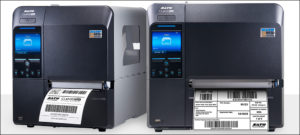 The printers can print text and barcodes on HF (high-frequency), UHF (ultrahigh-frequency) and Near Field Communication (NFC) tags or labels, as well as encode data in their embedded chips. On-screen menus eliminate the need to adjust antenna position manually, SATO reports, and the printers can check RFID chips prior to encoding, in order to verify their readiness and prevent failures. The SATO RF Analyze function optimizes the antenna and inlay setting automatically for fast, stable encoding. Users can find the best settings to encode tags when characteristics vary randomly due to lot differences, as well as adjust read and write conditions if encoding errors occur.
The printers can print text and barcodes on HF (high-frequency), UHF (ultrahigh-frequency) and Near Field Communication (NFC) tags or labels, as well as encode data in their embedded chips. On-screen menus eliminate the need to adjust antenna position manually, SATO reports, and the printers can check RFID chips prior to encoding, in order to verify their readiness and prevent failures. The SATO RF Analyze function optimizes the antenna and inlay setting automatically for fast, stable encoding. Users can find the best settings to encode tags when characteristics vary randomly due to lot differences, as well as adjust read and write conditions if encoding errors occur.
Registering commonly used settings can save up to 10 read-write tag and label types, the company reports. Users can select and load these settings to encode multiple media with the same printer. Compatibility with specialty RFID labels and tags supports the encoding of various tag and label types, SATO notes, including those used with metals.
Sony Intros Cellular Chipset for NB-IoT Networks
Sony Semiconductor Israel, a provider of cellular IoT chipsets, has announced its Altair ALT1255 low-power NB2 chipset. The 5G-ready chipset is designed with an integrated SIM, a user MCU, a rich application layer and a GSM/GPRS fallback modem. According to Sony, the chipset enables device manufacturers to develop low-power connected devices at a global scale to monitor, manage and control critical infrastructure, medical devices, logistic trackers and LPWA applications. The platform is commercially available now.
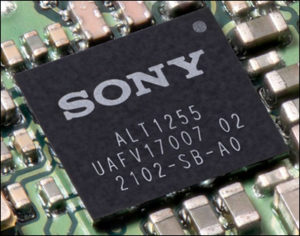 The ALT1255 was developed in-house by Sony Semiconductor Israel, based on the LTE-M/NB ALT1250 chipset, and leverages NB/2G technology. The chipsets share software architecture, modem application and networking layer, as well as APIs for fast and easy integration within the Altair product family. "The market shows a growing need for a feature-rich, fully integrated NB-IoT cellular chipset with 2G fallback," explained Dima Feldman, Sony Semiconductor Israel's VP of product management and marketing, in a prepared statement. "Module designs based on the ALT1255 will provide reliable connectivity for smart meters, logistics, telematics and smart-city applications."
The ALT1255 was developed in-house by Sony Semiconductor Israel, based on the LTE-M/NB ALT1250 chipset, and leverages NB/2G technology. The chipsets share software architecture, modem application and networking layer, as well as APIs for fast and easy integration within the Altair product family. "The market shows a growing need for a feature-rich, fully integrated NB-IoT cellular chipset with 2G fallback," explained Dima Feldman, Sony Semiconductor Israel's VP of product management and marketing, in a prepared statement. "Module designs based on the ALT1255 will provide reliable connectivity for smart meters, logistics, telematics and smart-city applications."
The built-in iSIM removes barriers related to cost, size and power, the company reports, while adding an additional security layer. The GSM/GPRS modem is intended to fill in gaps in LPWA network coverage and allow future-proof technology deployment in countries with mixed 2G/NB coverage. In addition, the device integrates a low-power ARM Cortex-M4 MCU, fully separated from the modem functionality and designed to run a variety of IoT and sensing applications, along with an adaptation layer to interconnect within the existing ecosystem.
The solution provides secure cloud connectivity, utilizing numerous communication protocols such as COAP and LWM2M. The ALT1255 is used by carriers, iSIM ecosystem partners and developers designing IoT devices, the company indicates, and has received Global Certification Forum certification, enabling customers to accelerate module and device certification.
uCIFI Alliance Offers IoT Data Model for Smart Cities, Utilities
The uCIFI Alliance has announced a unified data model to provide interoperability and interchangeability between connected devices. The open-source model targets smart-city applications, the organization reports, such as streetlighting, water metering and distribution monitoring, waste management, parking, traffic monitoring, air-quality monitoring, smart buildings, and safety and security. It also supports such services as multicast grouping, sensor-to-actuator dynamic control and a calendar-based control program to standardize edge computing for IoT sensors.
The uCIFI Alliance works with companies, cities and utilities to create a unified data model allowing a native communication format between connected sensors on cellular, NB-IoT and LoRaWAN networks, as well as an open-source reference implementation on Wi-SUN mesh. uCIFI says it hopes to become an IoT standard that offers cities and utilities full interoperability with other industry alliances and organizations, such as the Open Mobile Alliance and the Internet Protocol for Smart Objects.
With the unified data model, a series of 30 connected sensors and devices used for smart-city projects are described on the Open Mobile Alliance's Light Weight M2M registry. These reference objects and associated attributes are modelized using the LwM2M format, the organization explains, and can be used on any constrained IoT network. They can be implemented freely by any vendor in any product to meet cities' requirements for openness and interoperability. Vendors may join the alliance to benefit from its certification program, access test tools and other software resources, and contribute to interoperable object models.
"Our unified data model allows city and utility IoT verticals to immediately benefit from this open-source, multi-transport, multi-supplier and cost-efficient tool to break silos when designing and implementing IoT projects," said Helmut Schröder, the uCIFI Alliance's chairman, in a prepared statement. "Thanks to this unified payload structure, cities and integrators can avoid spending money and time breaking silos and developing proprietary data translators for various vendor products. As a result, cities can avoid vendor lock-in and have more flexible, wider and futureproof sourcing."
CISC Semiconductor Unveils NFC-Based IoT Wireless-Charging Platform
CISC Semiconductor, which designs and tests wireless communication systems, has launched an NFC and wireless charging (WLC) development platform. The new platform, the company reports, will enable convenient charging and the design of small, battery-powered IoT devices such as sensor nodes, earbuds, stylus pens and wristbands.
The NFC Forum's recent wireless charging specification, as well as the 36 billion IoT devices currently in use, show an increasing demand for a convenient charging solution and robust devices, CISC reports. With the launch of its NFC-WLC development platform, the company says it is offering a wireless solution portfolio from design concept to testing and production. The development platform includes antenna, hardware and firmware IP blocks to offer the capability of multi-tag support with load balancing, allowing fast, simultaneous charging of multiple devices.
"The modular-based approach of our NFC-WLC development platform helps our customers to build smaller and more powerful devices while at the same time being ahead in design and market introduction," said Josef Preishuber-Pflügl, CISC's CTO and business manager of RFID and NFC, in a prepared statement. "Our deep testing and antenna design know-how are key elements for compatible and stable products required to succeed in this market."
Headquartered in Austria, CISC Semiconductor offers hardware and software solutions intended to improve security, privacy, performance, interoperability and conformance in communication systems for such markets as automotive, identification, semiconductor and wireless communication. The company serves as a standardization consultant and is an active member of AIM Germany and North America, emi3, ETSI, IEC, ISO, the NFC Forum, the RAIN Alliance and the ARTEMIS Industry Association.
Avnet Adds NXP MCU to Computer for Real-Time Applications
Technology solutions provider Avnet has announced that it is enhancing the launch of NXP Semiconductors' i.MX RT1170 crossover MCU family with the MaaXBoard RT single-board computer, which can be used as a development board or as a building block for integration into original equipment manufacturers' custom systems. Security features include crypto engine, key protection, random number generation, secure storage bus encryption, tamper protection and secure boot. These features provide the security required for such applications as electrical grid control and medical applications, the company reports.
"As we continue to expand the popular i.MX RT series with our new dual-core i.MX RT1170 MCU family, we are especially pleased that design-in development platforms are readily available like Avnet's MaaXBoard RT single board computer," said Mario Centeno, NXP's global IoT marketing director, in a prepared statement. "Platforms like the MaaXBoard RT allow design engineers and makers to take full advantage of the large internal SRAM of 2MB, the multimedia capabilities with MIPI-DSI and 2D graphics engine and 1GHz performance to not only evaluate the i.MX RT1170 but to help accelerate time to market."
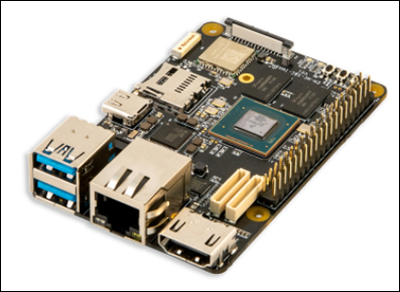 The MaaxBoard RT comes with peripheral interfaces enabling the development of custom applications. This includes software enablement via drivers, as well as middleware with bare metal and FreeRTOS options, with options for the Microsoft Azure real-time operating system expected soon. The platform comes with onboard peripherals, including 256 megabytes of SDRAM and HyperFlash, two Ethernet ports, a USB 2.0 port, MIPI-DSI, MIPI-CSI, Wi-Fi, Bluetooth, four microphones and an audio jack. A Raspberry Pi HAT-compatible expansion connector provides interfaces for UART, SPI, l2C and GPIO.
The MaaxBoard RT comes with peripheral interfaces enabling the development of custom applications. This includes software enablement via drivers, as well as middleware with bare metal and FreeRTOS options, with options for the Microsoft Azure real-time operating system expected soon. The platform comes with onboard peripherals, including 256 megabytes of SDRAM and HyperFlash, two Ethernet ports, a USB 2.0 port, MIPI-DSI, MIPI-CSI, Wi-Fi, Bluetooth, four microphones and an audio jack. A Raspberry Pi HAT-compatible expansion connector provides interfaces for UART, SPI, l2C and GPIO.
"By offering a low-cost i.MX RT1176-based single board computer, Avnet is making the latest, most innovative technology more accessible through the MaaXBoard RT turnkey solution and services for the design and development community," added Jim Beneke, Avnet's VP of products and emerging technologies, in the prepared statement. "Designers can use the board to prototype their ideas and then can quickly move to production with the compact, cost-effective MaaXBoard architecture. Avnet also offers hardware customization and software development services for OEMs needing additional help."
According to the company, the device is suitable for machine learning, IoT, industrial automation, multimedia, security and audio applications. To simplify the design of IoT applications, the capabilities of the MaaXBoard RT can be extended when combined with Avnet's IoTConnect Partner Program, which enables systems integrators and OEMs to build solutions and service models for devices on the IoTConnect platform, as well as leverage Avnet's experts to accelerate and scale IoT solution development.
The cloud-based platform is scalable to address common industry needs and challenges, the company reports. With a standardized way to harness the IoT, Avnet explains, designers can build smart apps and solutions on the platform. The i.MX RT1170 MCU family is based on Arm's Cortex-M7 and Cortex-M4 cores. The MaaxBoard RT is production-ready and FCC-, CE- and RoHS-certified, according to Avnet, and it is slated to be made available in the Americas, Europe and China. Developers can preorder the device now, with shipments expected to start in the second quarter of this year.
XO2Tech Integrates RFID Into Sentient Therapeutic Chatbot
XO2Tech has announced the Care-Bot, a sentient chatbot with RFID functionality, designed to engage in intelligent, emotional and therapeutic conversation to assist users in completing tasks, finding information or providing companionship solutions to address loneliness, social isolation, trauma or rehabilitation. Edward Espinosa, the company's founder, calls the Care-Bot a "next-generation emotional bot ('embot')" because of its ability to engage in conversations and provide therapeutic solutions.
The Care-Bot integrates RFID-based body vital sign monitoring, as well as voice, AI, machine learning and neural network strategies, to provide real-time feedback and conversational and contextual analysis integrating a user's voice and vitals. "This is a real breakthrough for user emotional interaction with bots, and likewise for bots to provide users with therapeutic solutions," Espinosa said in a prepared statement, "because of the neuro-linguistic mirroring and modeling capacity and digital empathy these applications can develop using machine learning coupled with real-time monitoring and application of a user's voice analysis and body vital signs."
According to Espinosa, the device can be programmed to provide a user with any type of behavioral response or engagement by incorporating vocabulary, conversational or engagement AI-matrix values to a user's specific vital-sign responses and needs. The Care-Bot can identify a user's emotional and well-being without that person expressing words or gestures, by using RFID tag sensing to detect minute changes in vital signs. It correlates and assigns words, conversations and interactions with extracted emotional or well-being values to create meaningful conversational exchanges and engagements.
The Care-Bot can convert RFID tag sensor data into human speech to create empathetic conversations with an emotionally supportive vocabulary, and is designed to provide a conversational, psychological and therapeutic tool. The application offers voice and RFID body vital sign monitoring and analysis to determine a user's conversational and emotional state, and the collected data can guide conversations and engagement to provide therapeutic solutions for addressing loneliness, social isolation, trauma or rehabilitation. "This is a very powerful application combining both RFID and voice," Espinosa added in the prepared statement, "to provide life-changing solutions, rehabilitation and healing to create a more humane and better world."
Industrial Internet Consortium Publishes IIoT Models White Paper
The Industrial Internet Consortium (IIC) has published a white paper titled "Characteristics of IIoT Models." Interoperability between applications, subsystems and devices in Industrial Internet of Things (IIoT) systems requires agreement on the context and meaning of the data being exchanged, the organization explains, and this is typically captured in an information model. The white paper addresses the challenge of integrating subsystems in IIoT solutions that employ different information models. It examines how standardized information models that use a descriptive or semantic approach to enable interoperability and digital transformation.
"The variety of digital data and information systems is an indispensable attribute of the modern world of IIoT," the IIC explained in a prepared statement. "In each industrial vertical, one way or another, work is underway to reach agreements between stakeholders through the development of standards and data schemas. Our white paper provides a simple definition of the characteristics and properties of information models, which can be useful in the design of IIoT systems and, which is especially important, for multiple systems to work seamlessly with each other."
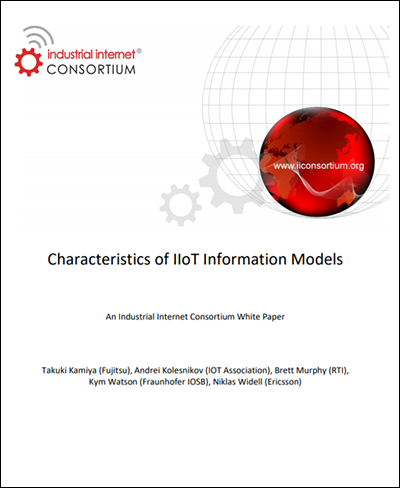 "Semantically based information models can share data across domain boundaries using a descriptive approach (instead of a translational approach) as the data has meaning in both domains, and the full fidelity of the original data are maintained," said Fraunhofer IOSB's Kym Watson, a co-author of the white paper, in the prepared statement. "Our intent in this white paper is to survey a subset of information models that are relevant to the IIoT and characterize those information models using a meta-model developed for this purpose. With this, we capture commonalities and can begin to address the challenge of integrating subsystems that use different information models."
"Semantically based information models can share data across domain boundaries using a descriptive approach (instead of a translational approach) as the data has meaning in both domains, and the full fidelity of the original data are maintained," said Fraunhofer IOSB's Kym Watson, a co-author of the white paper, in the prepared statement. "Our intent in this white paper is to survey a subset of information models that are relevant to the IIoT and characterize those information models using a meta-model developed for this purpose. With this, we capture commonalities and can begin to address the challenge of integrating subsystems that use different information models."
"An information model is a representation of concepts, relationships, constraints, rules, and operations to specify data structures and semantics," added Ericsson's Niklas Widell, another co-author, in the prepared statement. "There are multitudes of information models available or under active development for a variety of application domains or industries. We focused on information models above the Industrial Internet of Things Connectivity Framework layer where semantic interoperability, including translation between different models, plays a key role."
The paper examines the following standardized information models:
• Web of Things—a set of standards by the W3C for solving the interoperability issues of different IoT platforms and application domains.
• SensorThings API—an Open Geospatial Consortium standard providing an open and unified framework to interconnect IoT sensing devices, data, and applications over the Web.
• OPC UA—a machine-to-machine communication protocol for industrial automation developed by the OPC Foundation, focusing on communicating with industrial equipment and systems for data collection and control.
• Asset Administration Shell—a key concept of Industry 4.0 used to describe an asset electronically in a standardized manner. Its purpose is to exchange asset-related data among industrial assets and between assets and production orchestration systems or engineering tools.
• IPSO Smart Objects—a lightweight design pattern and object model to enable data interoperability between IoT devices, building on the LwM2M IoT device management standard, specified by OMA SpecWorks.
• One Data Model/Semantic Definition Format—an initiative to improve interworking across different ecosystems' data models using an emerging standard from the IETF. The OneDM Liaison Group adopts and aligns IoT models contributed by participating organizations, so best practice models for desired features or purposes can be identified.
"Standardized information models with defined semantics and APIs are an essential foundation for any form of digital transformation," said the Internet of Things Association's Andrei Kolesnikov, a fellow co-author, in the statement. "There must be a seamless integration across the system life cycles, especially engineering and operations for all data sharing technologies."
Juniper Systems Produces Smart-Card Reader for Security Apps
Juniper Systems has announced its Mesa 3 Smart Card Reader (SCR). This military-grade, CAC/PIV-compatible SCR integrates with Juniper's Mesa 3 Rugged Tablet, providing a two-tier authentication solution for data protection in high-security, rugged industries. The reader features a compact, integrated design, the company reports, and has been integrated into the tablet's existing design, using the same mounting points as the Mesa's corner bumpers. Ports for charging, USB and headphones have been relocated to the bottom of the device.
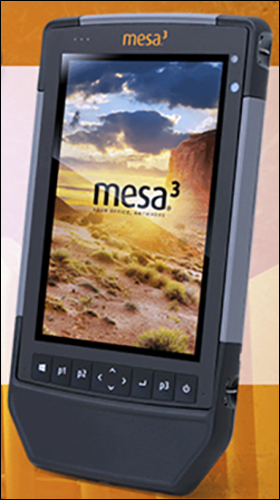 "Our Smart Card Reader on the Mesa 3 Rugged Tablet is perfect for controlling access in volatile locations, such as nuclear facilities, power generation plants and airports," said Simon Bowe, Juniper Systems' managing director, in a prepared statement. "The Mesa 3's ultra-rugged, waterproof and dustproof design stands up to extreme environments whilst the SCR provides extra levels of security."
"Our Smart Card Reader on the Mesa 3 Rugged Tablet is perfect for controlling access in volatile locations, such as nuclear facilities, power generation plants and airports," said Simon Bowe, Juniper Systems' managing director, in a prepared statement. "The Mesa 3's ultra-rugged, waterproof and dustproof design stands up to extreme environments whilst the SCR provides extra levels of security."
Design flexibility allows the reader to control access to resources, the company reports, by reading a variety of cards, including military common-access cards, employee personal identity verification credentials, and smart cards (integrated circuit cards). It features card insertion and removal detection with an automatic deactivation sequence, and it supports both synchronous and asynchronous protocols.
The reader is intended for industries that require additional authentication, the firm explains, and organizations can use it to verify employee identities and control access to sensitive information or locations. Common smart-card authentication standards have been built in for use by organizations that issue identity credentials to employees and contractors. Once an image of a company's existing operating system or software requiring smart-card authentication has been installed on the reader, the proper validation measures are required to access the device or its programs.
Applications include the military, government agencies, law enforcement, nuclear facilities, airports, public utilities, critical infrastructure, emergency services, medical facilities and more. The tablet and integrated SCR is a Microsoft Windows 10-based device, the company adds, and its rugged design enables it to be used in any environment. The reader is now available worldwide.

